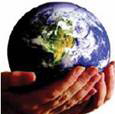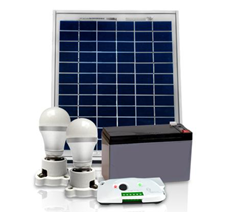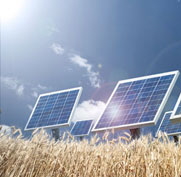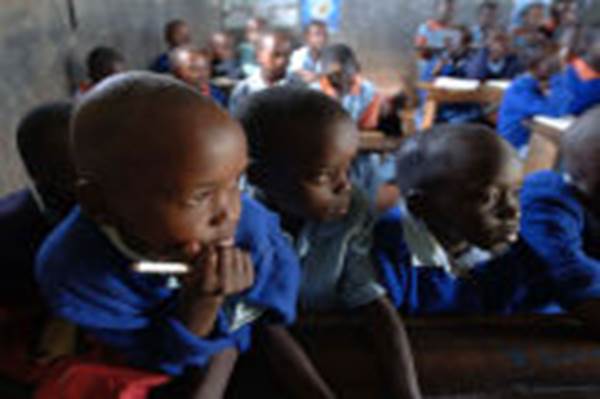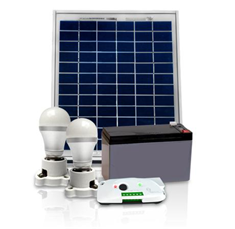|
Why?
Free The Children has been operating in Kenya since 1999 within the Narok South District, working with both Kipsigis and Maasai communities.
Through the Adopt a Village program, we’ve engaged many communities across the Mara and built schools, libraries, water projects, latrines, kitchens and
teachers’ accommodations. There are now many communities involved in our development and education projects in these communities and our team of
community outreach and development workers consistently works with active women’s, men’s and youth groups.
In 2002, Kenya’s newly elected government made primary education free and announced it in the national newspaper on a Friday. The following Monday,
one million additional children woke up to go to school. The sudden pronouncement had left no time for preparation. Kenyan schools were caught off
guard. To this day, the government is struggling to catch up. This is where Free The Children comes in.
Free The Children builds schools and school rooms while the government pledges to maintain them in their entirety, including hiring teachers and providing
materials and resources.In addition, Kenya faces other issues. As of 2003, 56% of the Kenyan population lives below the poverty line—$17 per month in rural areas and $36
per month in urban areas. Extreme poverty (defined as those living under $1 per day) includes almost 30% of Kenya’s current population. In the
Narok South District where Free The Children focuses its efforts, one in 10 Kenyan children still die before reaching their fifth birthday.
One third of children under five years of age are stunted, reflecting chronic under-nutrition. This proportion is 14 times higher than the
level expected in a healthy, well-nourished population.
General information on Kenya
Some facts about Kenya
The Republic of Kenya’s population is 40.8 million and its capital is Nairobi. The country has been referred to as "the cradle of humanity" since
scientists discovered some of the earliest evidence of man's ancestors on Kenyan soil.
Its impressive ethnic diversity is an important element of Kenyan culture, on one hand, and a source of conflict on the other. Violence between
tribes has contributed to internal displacement in the country. The majority of Kenyans are bilingual in English and Swahili.
After independence from Britain was sealed in 1963, Kenyan politics were for many years dominated by the charismatic Jomo Kenyatta who
led the country until his death in 1978. The country was a de facto one-party state from 1969 until 1982 when multiparty politics were successfully
restored, mainly as a result of international pressure.
Pressing challenges in present-day Kenya include high unemployment, crippling poverty and high crime rates. The tourism industry has been an
important source of income and has become the country's primary hard currency earner over recent years. Abundant wildlife and scenic
landscapes make Kenya a major safari destination that attracts thousands of foreign visitors every year. Kenya has also played a vital role
in the Somali and Sudanese peace processes.
Frequent droughts drive millions into starvation
Although Kenya has recently seen economic growth, around 11 million people are still undernourished and a major part of the country's population
is unable to meet their daily calorie requirements. Floods and droughts continue to have a severe impact on the availability of food, particularly in
semi-nomadic zones.
In the drought-prone north, access to medical services is poor and many families cannot meet even the most basic needs such as running water,
sewage systems and sanitation. Around 60 per cent of the Kenyan population face a life in poverty, with a substantial part living in conditions of
extreme poverty.
In 2008, a wave of post-electoral violence hit Kenya. The crisis led to over 1,000 deaths and massive displacement. Hundreds of thousands were
forced to flee their homes and 75,000 children had to take shelter in over 100 camps for internally displaced persons.
Life expectancy at birth is only 55 years. Apart from the HIV/AIDS pandemic that dramatically affects Kenya, widespread infectious diseases in the
country include typhoid, hepatitis A and bacterial diarrhoea.
Situation of the children in Kenya
Kenya ratified the African Charter on the Rights and Welfare of the Child (ACRWC) and various conventions, but some issues remain unresolved,
such as clear guidelines regarding corporal punishment or the minimum age for marriage and criminal responsibility.
SHAPE \* MERGEFORMAT
Thousands of children in Kenya are deeply affected by persistently high levels of poverty. The well-being of young children is particularly at risk as
undernourishment and child mortality have increased.
A growing number of children live without parental care or at the brink of losing it.
At 6.3 per cent, Kenya also has one of the highest HIV prevalence rates in the entire world. Nearly 1,200,000 children in Kenya aged 0 to 17 have
been orphaned as a direct result of AIDS. In order to protect children from the virus, the Kenyan government has launched an ambitious initiative to
completely eradicate mother-to-child-transmission of HIV and paediatric AIDS by 2015.
Another public health concern for young children in Kenya continues to be malaria, which kills around 26,000 children under the age of five every year.
Child mortality is high at 84 per 1,000 live births.
An increasingly high number of households in Kenya are headed by children. It is a proven fact that female-headed households and child-headed
households are more likely to experience high levels of poverty.
Young children are often obliged to work instead of being able to go to school as they have to put food on the table for an entire family.
In Kenya, an estimated 130,000 children live in the streets as a result of poverty, family neglect and social discrimination. Many of them are forced
into exploitative child labour and eventually even commercial sex work. At present, an estimated 10,000 children have been caught up in the sex trade,
particularly in the country's coastal regions. Many children resort to prostitution as a way to make a living.
SOS Children's Villages in Kenya
Kenya was one of the first African countries where SOS Children's Villages became active. The national Kenyan association was founded in 1971, primarily
because of the ever-increasing number of orphaned and neglected children in Kenya.
SOS Children's Villages has been running SOS Family Strengthening Programmes in the country, which enable children who are at risk of losing
family care to grow up within a caring family environment. To achieve this, the organisation works together with families and communities, empowering
them to effectively protect and care for their children.
At present, we are supporting Kenyan children and young people by providing day-care, education, vocational training and medical services in
five different locations. Children whose families cannot take care of them can find a loving home in one of the SOS families.Website of SOS
Children's Villages Kenya
SOS Children's Village Eldoret
SHAPE \* MERGEFORMAT
Eldoret lies near the Ugandan border in the Uasin Gishu District in the mid-west of the country, some 380 km North-West of Nairobi. Roughly 70,000 inhabitants
make Eldoret Kenya's fifth largest town. An unprecedented boom was caused by the recent settlement of several large industrial businesses in greater Eldoret.
The subsequent influx of people from the neighbouring regions searching for jobs led to a rise in the number of children in need. This sparked the construction
of an SOS Children's Village in Eldoret in 1988. The SOS Children’s Village Eldoret was formally opened on 1 March 1995.
The SOS Children's Village Eldoret lies four km from Eldoret, and consists of twelve family houses, a village director's house, a guest house, an administrative
and service block, and a house for the so-called SOS Aunts (SOS Aunts take care of the children in case of an SOS Mother's absence).
The attached SOS Kindergarten started operating in 1990. The SOS Kindergarten consists of three group rooms, a playground and several secondary rooms.
It is currently attended by 75 children from both the SOS Children's Village, and the local neighbourhood. From about 15 years of age onwards, the SOS youth
are housed in the five SOS Youth Houses for the period of their secondary/vocational education, giving them more responsibility as they are only supervised by
one youth educator. SOS mothers, village directors and psychologists carefully prepare the youngsters for this significant step towards independence, to which
roughly four years are assigned; extendable for prolonged education or job search.
Since its establishment in 1989, the SOS Hermann Gmeiner Primary and Secondary School has developed into an essential educational facility. An expansion
became necessary in 1991, as the classrooms could no longer absorb the increasing pupil numbers resulting from the school's good reputation. Some 700 pupils
from the SOS Children's Village and the local neighbourhood currently attend the SOS Hermann Gmeiner Primary and Secondary School, which consists of
19 classrooms, a computer lab, a library, two tech labs, a multi-purpose hall, and administrative block, and staff accommodation. Many trees were planted,
and play and sports grounds were established next to the school. A small tuition fee is necessary as the school is responsible for paying the teachers.
A reduction is available for those children especially in need.
SOS Children's Village Meru
SHAPE \* MERGEFORMAT
The fourth and, for the time being, the last SOS Children's Village in Kenya was built on a site which is 7.3 hectares and which was donated by the Methodist
University of Meru in the year 2000. The small town of Meru is located about 280 km north of Nairobi at the foot of Mount Kenya. The SOS Children's Village
is situated on the outskirts of Meru on the road to Mount Kenya National Park. Due to its central location, Meru was considered as a perfect location for the
construction of an SOS Children's Village. Meru has a fairly good infrastructure, it is easy to reach and it is situated in the middle of one of the most densely
populated areas in Kenya. Educational and social facilities are insufficient, however, due to the construction of the SOS Children's Village and the SOS
Kindergarten SOS Kinderdorf International was able to considerably improve the social standards of the local population.
SOS Children's Village Meru comprises 12 family houses accommodating a total of 120 children, the village director's House, accommodation for SOS aunts
(SOS aunts take care of the children when SOS mothers are on leave), guest house, multi-purpose hall, library and an administration and service area.
The SOS Kindergarten attached to the SOS Children's Village was opened in 2003. It comprises three group rooms, a Montessori class room, a multi-purpose
room, a kitchen and side rooms. At the moment, it is attended by 100 children both from the SOS Children's Village and the local neighbourhood.
The construction of an SOS Hermann Gmeiner School and an SOS Medical Centre are in the planning stage. Whether or not they will finally be built depends
on the needs of the local population and the extent to which the local authorities are willing to support the project.
SOS Children's Village Mombasa

Mombasa is a lively port-town and tourist centre with around 400,000 inhabitants. Sadly, another feature are the vast slums on the periphery of the city.
Construction works for the SOS Children's Village Mombasa were completed in 1979. In the same year, the first children and SOS mothers moved in.
The SOS Children's Village Mombasa developed in the Northern shore of the Bay of Mombasa, 500 metres from the coast. It consists of twelve family
houses, a village director's house, staff flats, a house for the SOS Aunts (SOS Aunts take care of the children in case of an SOS Mother's absence),
and an administrative and service unit. Each family house comprises a small garden in which fruits and vegetables are cultivated. The keeping of goats,
cows and geese makes a valuable contribution towards the Village's self-sufficiency. 120 children are currently housed in the SOS Children's Village Mombasa.
The attached SOS Kindergarten was opened in 1979, and consists of four group rooms, a playground, and several secondary rooms. It is currently attended
by 100 children both from the SOS Children's Village, and the local neighbourhood.
A Youth House for the older youth which were soon to outgrow the SOS Children's Village was rented in 1995, in the town of Maweni, some four kilometres
from the SOS Children's Village. Meanwhile, a total of six SOS Youth Houses developed. The children move into the SOS Youth House at around 15 years of age,
giving them more responsibility as they are only supervised by one youth educator. SOS mothers, village directors and psychologists carefully prepare the
youngsters for this significant step towards independence, to which roughly four years are assigned; extendable for prolonged education or job search. Since
its establishment in 2001, the SOS Hermann Gmeiner Primary School has developed into an indispensable educational facility. It is currently attended by about
480 children from both the SOS Children's Village, and the local Neighbourhood. It consists of 16 classrooms, a library, a multi-purpose hall, and an administrative unit.
SOS Children's Village Nairobi
SHAPE \* MERGEFORMAT
SOS Children's Village Nairobi lies in the so-called Eastlands, which are part of the peripheral districts of Nairobi. The capital experienced rapid growth, and has
some 1.5 million inhabitants today. On 16 October 1975, SOS Children's Village Nairobi was opened in the presence of both the Kenyan Vice-President, and the
SOS-Kinderdorf founder Hermann Gmeiner. It comprises 16 family houses, a village director's house, a house for the SOS aunts (SOS aunts take care of the
children in case of an SOS mother's absence), a guest house, a sports ground, a multi-purpose hall, an administrative and service unit, coops for the chickens,
beehives, vegetable beds, and a water preparation plant
|
